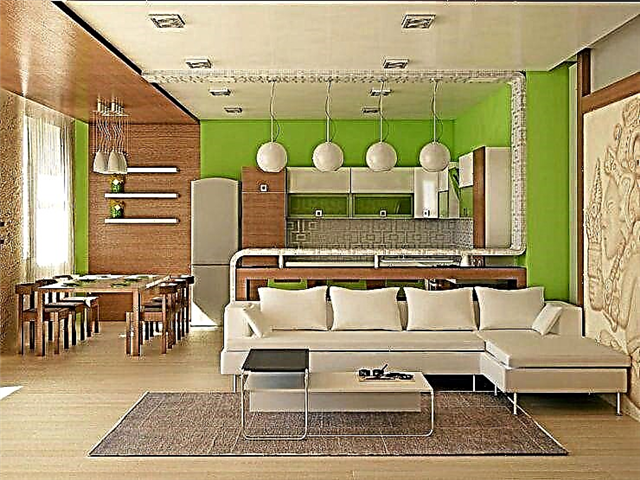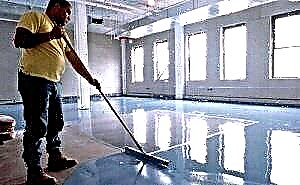It would seem that the laminate creaks and crunches these are synonyms, and the listing through “I” is casuistry and there is no difference here. But it is not so. There are several differences: a screed, poorly cleaned from sand grains, a crushed substrate and finally broken, with an uneven base, lock connection can crackle. A creak is formed with an untreated castle, both on an even foundation and when the coating sags on bumps. An experienced master, in most cases, will understand the situation and will be able to tell what to do and how to fix it. If possible.
Some types of modern laminate have a new generation of locking joints with plastic inserts. These mounts can click until they snap into place. And the famous brand Berry Alloc in the design has an aluminum type of clutch. After installation, this type of expensively laminated coating may snap.

The Scandinavian god Thor had a chariot with two harnessed goats. One was called Teeth Grinding, the second was Teeth Grinding. It seems the same thing, but the goats are different. Such is the moral.
Laminate creaks while walking
During installation, a professional craftsman can already assume what will happen next with the floor covering. Sometimes, when the flooring is floating, slight creaks are immediately heard - this is the surface of the coating is pressed through when walking, forming a creak.
There was such a case. We arrived at the order for laying laminate Megafloor. In principle, this is a good brand at a price of about 600 rubles / m2 and I often recommended it. But in the period of two to three years ago, this brand experienced some difficulties with quality and periodically various jambs surfaced.
When installing the second row, the laminate creaked while walking. The base was flat, and the substrate was stiff. Opening the second package they heard the same unpleasant sound. They described the situation to customers and offered two options. Or hand over the entire batch back to the store, or continue to lay. People have opted for the latter option.
What could be done in this case? To correct the situation, it was possible to treat the locks with paraffin sealant. Now, of course, I don’t remember whether the grooves of Megaflora were greased at that time with a wax compound. I guess not.
Laminate creaks due to uneven base
According to the instructions of the laminate manufacturers, the difference in the base should be no more than 2-3 mm per meter running. Some unevenness is compensated by the spread substrate. The laminate floor takes the form of a screed over time, but gradually there is a divergence at the ends of the lock joint and a break is formed. The panels no longer stick together and friction appears. We can hear clicks, creaking, crunching, depending on which parts and “how” cling and rub.

In such cases, nothing can be done about this problem. Correction of a deficiency is possible only by leveling the base and laying a new laminate.
But this is not a matter of one day, it may take years, and you won’t even think about paying attention to a couple of squeaks. I had a chance to lay laminate flooring in a house of the Khrushchev era. Customers did not need to align anything, because they planned to live in this apartment for 2-3 years, and then sell it.
The base was very uneven. Therefore, I recommended buying an Art Floor laminate with UniClic lock. When assembling the cracks was practically not observed and the person was pleased. I wrote to him on VKontakte a few months later, he said that everything was wonderful.
Laminate creaks due to thick, soft backing
When the furniture is placed, the load on the laminate. Partially, due to the adhesion of the slats to each other, weight is redistributed. But the main pressure is created by the legs of heavy sofas, cabinets directly on the locks. If the leg of a two-hundred-kilogram sofa hits the corner of the laminated board, the edge will inevitably break through over time. The result will be a broken lock connection followed by a creak.

It does not matter what insulation, cork or foamed, will be in this case. Although the cork will last longer.
For a longer service of the joints of the laminate, I recommend laying a solid substrate, but the floors under it should be properly leveled. If the base is not very even, it is better to lay a soft insulation: but not more than 3 mm - foamed and 5 mm from polystyrene. But keep in mind that manufacturers of laminated coatings do not provide guarantees for a 5 mm lining.
Laminate creaks and crunches, what to do and how to fix it
1) Actually, if the laminate began to creak after laying after a year or more, you can do nothing. Most likely, the key joints began to break or the substrate was sold. Warranty obligations from the manufacturer do not apply to this marriage.
Today, July 15, 2018, before the publication of the article for publication, they were faced with a crisp Egger brand laminate. The key connection is classic. During the sale, the woman was told that the products were made in Germany. This turned out to be wrong.

During the flooring, several rows already heard the crunch of boards, it was small. The customer was informed about this, but it was decided to lay it further, since furniture was imported in the near future.
The floor was not perfectly smooth, hard linoleum remained below, Profitex substrate spread over it. However, the degree of unevenness of the base never instantly affects the crunch of the floor.
2) And here is the case with the creak of the laminate in a room of 12 m2. At the request of the customer, although we actively opposed this, we laid the floating laminate floor in two layers of foam insulation. During operation, the lock connection was sold and, as a result, broke. A creak of rubbing panels formed.

Upon arrival at the after-sales service, they asked how many panels were left to replace the marriage. After all, during dismantling, still defective elements may appear, on which the same situation with a creak may occur. But it turned out that the spouse had already taken care of the extra details and carried them out onto the street.
As a result, they decided not to change anything, since the place with the creak of the laminate still turned out to be under the sofa.
3) Still there are often cases, in the area of the door block there is regularly a slight difference in height. When mounting a metal docking nut, the front edge of the laminated board is pressed to the base. But the clamping occurs unevenly and when walking in this place creates tension and, as a result, creak.
This problem can be solved in this way. In general, there are several options. One way is to try to tighten the door sill tightly. The product will be pressed to the base and there will be no voids when pressure is applied to the floor element. Thus the creaking of the laminate will go away. Or vice versa - slightly loosen the mount, the voltage on the lock can be leveled. You need to try several options.
Alternatively, you can fix such a defect by removing the sills and put a piece of the substrate at the deflection point for alignment. And, accordingly, pull the decorative strip back.
Remember, not only the laminate can creak. If the laminate floor was laid on an old creaking parquet, then the nasty sounds will not go away. Often I see cases when plywood sheets are not properly fixed. Installation of plywood should be carried out with small gaps - about 2 mm. This is due to the fact that plywood, like any wood, breathes. And when the heating is off, in the absence of a compensating seam, it expands and grinds to each other, forming a creak.
Self-tapping screws fastening sheets can also creak. Any wood dries out over time and the screws in the holes begin to play. When walking on this floor sounds are formed. That is why the floor in the villages, and any staircase made of wood in country houses makes a moan.
You can also confuse with the creak of the laminate the sound of a rubbing plastic baseboard. When installing the skirting board, everyone tries to press the moldings to the floor to avoid cracks under the decorative element. And this is absolutely true, but if the base is not even enough, then the plastic element rubs against the coating when walking. As a result of the created tension and in the combined interaction, the parts emit a characteristic unpleasant sound.
What to do, how to fix it, if the laminate was recently installed and it began to creak or crackle?
A short guide to the causes of creaking and cracking laminate flooring. Recommendations and advice on what can be done and how to fix it.
- Recall whether you have cleaned the foundation of building sand well. It is clear that this question is appropriate if the foundation is a cement-sand screed.
- If the laminate was laid with a modern type of lock connection (4G, 5G) - listen carefully again, stepping on the ends of the end joints. This is probably rubbed by plastic inserts and click. Buy a Rico wax sealant and pour it into the ends. Typically, laminate floors with this type of adhesion have a chamfer. The joint of the beveled faces will serve as a reservoir for the sealing composition. It should absorb and work like grease. The outcome is likely, in which, after some time, the joints stop clicking.
- Squeaking can occur if, for example, a laminate is installed in the winter when the heating is on. And with the end of the heating season, the end of spring –– the beginning of summer, the coating began to expand imperceptibly to the eye. Leaning against the walls creates a load on the castle. This situation can be seen by removing the wall plinth. If further expansion is prevented by cutting through the buried edge, you can save the likely break of the locks and eliminate the creak.
- Damage to the lock also occurs with improperly performed independent laying or installation of the laminate by amateurs. Incorrectly mounted boards threaten to instantly break the lock. This happens if there is no assembly experience and ignoring the factory instructions.
- Check if the door sills and door bumpers are installed correctly. It is necessary to unscrew the screws and inspect the place of fasteners. The hole when passing through the screw of the laminated panel should be enlarged so that there is play for movement.
- Moist cleaning of the room can help for a short time. This is especially true for parquet boards, but can also affect the laminate floor. To improve the microclimate inside the apartment, if dry, put humidifiers. I heard about this for a long time that it can eliminate squeaks by saturating the material with moisture.
- If none of the above is broken, and the floor has been installed recently, try contacting the seller of the goods. But most likely, they will tell you that the installation technology is violated. And if the craftsmen were sent from the store, it was too dry in the apartment.
Why does the laminate creak?
If the laminate crunches and creaks, look for the reason in one or several factors at once:
- an initially poor-quality laminate with unusable locks and curved geometry was purchased,
- climatic conditions of use are violated,
- styling technology not respected
- floor leveling not done
- no technical gaps left
- too thick substrate used
- improper cleaning of dust, debris during installation,
- Temperature, humidity changes occur.
How to remove a creak indiscriminately?
Why does the laminate creak, how to fix this problem without dismantling? If the reason is not in serious violations of the styling technology, perhaps simpler quick ways will help you.
- Paraffin candle. Melt it, pour wax in the places where you hear the sound. If cracks form between the seams, the candle may become a sealant. Processing with a soft spatula will close them and protect them from water and debris.
- Polyurethane foam. It will help with the deflection of floorboards. Put on the nozzle, shake the bottle, fill the foam under the boards in the place where it creaks. Wait for complete drying, remove residues from the surface with a special solution. This method is quite simple, but not too effective - everything will be fine until the foam sags. And it will happen very quickly.
- PVA glue. Used as a substitute for foam. Drill a hole of 0.5 mm (one or more) in the place of an unpleasant sound, remove debris, pour glue into the hole with a syringe. Until completely dry, do not step on this place, it should stop creaking.
- Butter. Life hack is exactly the same as with PVA glue - drill the floor, pour it with a syringe. Lubrication of boards works great on thresholds and other places with constant load.

In the photo there is colored wax with which you can close drilled holes
The best ways to eliminate squeaking
If the root of evil lies in materials of poor quality or broken installation technology, most likely you will have to disassemble the floor and put it on a new one. But do not rush with this decision!
Dismantling is not the only way to eliminate the creaking of the laminate. Understanding the cause of unpleasant sounds in the future will help determine the simplest non-cost option for disposal.
Get rid of squeaking due to uneven floors
Poor preparation of the base will lead to one result: the laminate creaks. Any pits or bulges appear when walking, spoil the geometry of the laminate floor.
Unfortunately, to fix the uneven base, you have to disassemble the floor. How much depends on the scale of the problem.
If the laminate creaks in one place, disassemble it before it, cement the cavity or grind the mound, let it dry, put the boards in place.

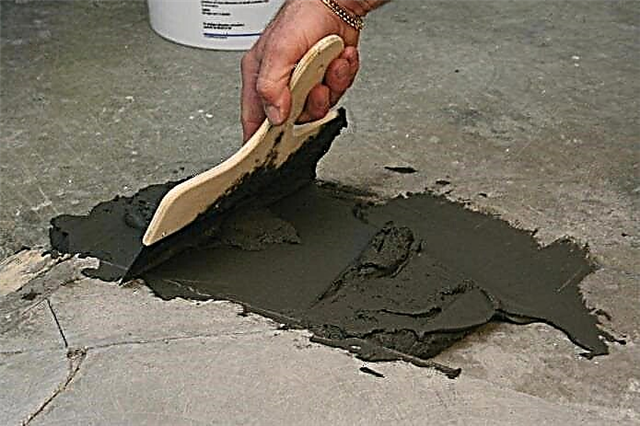


If the sound is across the floor, it is necessary to dismantle the floor covering, to level it - it is best to use the bulk method, lay the substrate, lay the slats in a new way.
Important: The rickety lamellas cannot be returned to the place, they require replacement with new ones.
Watch the video to find out why it is still not possible to lay the laminate on an uneven base.
What if the laminate creaks due to the temperature gap?
When the laminate does not creak constantly, but with a change in the temperature or humidity of the room - remove the skirting boards and check the condition of the technical clearances.
Laminate boards tend to expand / contract under climatic variations. If during laying the laminate does not leave a distance between the coating and the wall or leave insufficient, when expanding, the strips will quickly abut against the wall. The surface begins to creak, to rattle in separate places.
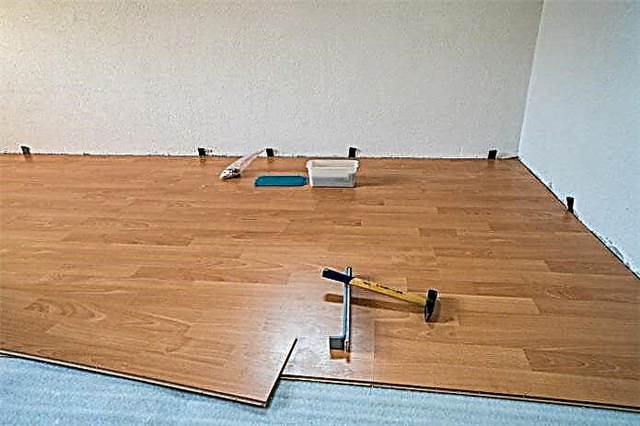
In the photo, one of the ways to leave gaps when laying a laminate board
When wondering why the laminate creaks, first of all check the climatic gap near the walls and pipes for compliance with the standards:
- the correct clearance for most rooms is 1 cm,
- the distance from the board to the pipe - 1.5 cm,
- the gap between the floor and the walls in wet as well as large rooms is 1.5 cm.
If this is the cause of the creaking of the laminate, the solution will not require dismantling. Masters advise to eliminate this problem by cutting the boards to the required width around the perimeter of the room. At large distances, a grinder will help, a jigsaw - saw off carefully so as not to damage the wall and floor. And around the pipes, cut the laminate with a sharp knife.
We remove the creak of the laminate locks
The tension in the locks is another reason for creaking. If the problem is in it, then an unpleasant sound will appear almost immediately after installation. This is due to the fact that the flooring adapts to the surface of the base, patency, room climate.

The photo shows an example of a laminate floor. After laying, 2-3 months should pass before the lamellas take their final shape and stop creaking.
When the floor settles down, it will take its final form, it will cease to creak by itself. As a rule, this takes up to 3 months. If this does not happen - first of all, check for the presence, size of climatic gaps, following the instructions from the previous paragraph.
How to remove the creak of the laminate due to the remaining debris?
If the laminate creaks while walking, the cause may be sand and other small debris. Dust does not occur by itself, but remains after laying in haste - without thorough cleaning before, during, after installation.
A loud crunch will indicate that sand has got into the locks of the laminate floor. Do not delay the repair of the coating: small specks can lead not only to extraneous sounds, but also damage to the lock joints.
As a rule, it will not be possible to remove the creak of the laminate without disassembling - you will have to remove the lamellas, remove the substrate, clean the base from debris, put the lamellas in a new one. To avoid confusion during reinstallation, number each part before disassembling.

In the photo is a construction vacuum cleaner that will facilitate the cleaning of screed from debris and dust
A crumbling screed can also lead to accumulation of dirt and creak of the laminate. To correct the mistake made, the coating is disassembled to the place where it creaks, poured with cement, leveled, dried well, primed. If you are not sure what you can do, call the wizard for the lighthouse.
Start laying after drying completely. Before starting, thoroughly clean the base, and during - pass through each strip with a vacuum cleaner.
How to fix a creaky laminate if the backing is too soft?
The substrate is the most important layer of the finished floor. It smoothes out small irregularities, protects the laminate floor from water and moisture, dampens noise, and is soundproof and thermally insulated. But more does not mean better. Do not try to solve the drawbacks of the screed, make the flat floor a thickened gasket. A too thick substrate will settle, the laminate on it will begin to bend, its locks will fail, it will certainly begin to creak.

In the photo, a thin cork substrate for laminated panels
The optimal thickness depends on many factors. Including the type of laminate, operating conditions and substrate material. Most often, the manufacturer indicates on the packaging with panels the most suitable option.
Dependence of thickness on material:
- cork - 2-4 mm,
- coniferous - 4 mm,
- foamed - 2-3 mm.
Dependence of thickness on laminate:
- standard 8 mm panels - 2-3 mm,
- thin 6-7 mm - 2 mm,
- thick 9-11 mm - 3-5 mm.
How to eliminate the creak of the laminate due to the substrate? Change! It will be necessary to completely dismantle the coating, replace the old gasket with a new one and re-lay the lamellas.
How to avoid squeaking?
The surest way to remove the creak of the laminate is to do everything from the beginning to avoid it. To do this, you need to know the subtleties of laying this coating and follow the rules.
- Do not use laminate immediately after purchase. Like linoleum, he needs to lie down in the room where he will be bedding. Just leave the boards horizontally for 24 hours in the summer and 48 hours in the winter at room temperature. When they take their final shape, they will be ready for installation.
- Get high quality laminate flooring. Saving on materials can result in many problems: from squeaking and crunching, to deformation, swelling. A more expensive laminate will last much longer without complaints.
- Thoroughly prepare the base. The bulk floor or cement screed should be perfectly aligned, smooth, and durable. If the surface crumbles, you will definitely hear a crunch under your feet. And irregularities and defects will be manifested by sagging, swelling of the boards.

The photo shows an example of high-quality installation: perfectly smooth and clean concrete floor, the right thin substrate
- Choose the right substrate. The most wear-resistant option is cork. It will not bend under the yoke of furniture even after a few years, but is not suitable for use in wet rooms. The most profitable is foamed, but it can deform, thin out. Eco-friendly coniferous bark is often too thick, so it is suitable only for compacted laminate. The optimal thickness of the substrate for use in the apartment is 3 mm.
- Keep clean. Clean the room before laying the substrate and before installing the panels. Keep the vacuum cleaner on hand during installation, remove dust as often as possible. If possible - cut in a separate room.
- Leave temperature gaps. We have already mentioned the ideal distance between the wall and the boards - 1 cm. At a high level of humidity and temperature, increase it by 50 mm. In large rooms also leave gaps between the boards themselves, covering them with decorative strips.
Before starting work, study not only the rules, but also consider the mistakes of others:
Preventing a problem is much easier than getting rid of the squeak after laying. But if you are faced with the problem of extraneous sounds - do not delay the solution. Time can only aggravate the situation, increase the cost of correcting errors.
1. Compensation gap (indent) from the wall is absent or minimal.
Laminate changes dimensions (dries and expands) with a change in temperature and humidity conditions. For this, a gap is left near the walls of 8-12 mm. If not, the boards will eventually run into the wall. And then, if it is impossible to further expand, they will be buried in each other at the joints.
A characteristic feature - the lamellae rose at the junction.
Cracking will occur in these places while walking. Since the planks will rub against each other from stress. How to remove the creak of the laminate in this case?

Decision: Correct the situation without disassembling. It is enough to remove the baseboard and check the clearance. If its size is insufficient - just file the edge of the laid laminate. This can be done with a grinder or a jigsaw, but it is most convenient to cut the laminate with a renovator.
2. The laminate is pressed with heavy furniture that prevents it from moving.
Example: Humidity changes, and the board begins to increase in size, pushing the next. But the next lamella is pressed by a sofa and its movement is limited. As a result, the dies will abut the ends and will crack if stepped on. This, as in the previous case, is due to friction of the narrow parts of the slats.
A sign is a slight swelling at the junction. How to eliminate the creak of a laminate without removing it?
Decision: You need to slightly push back the board, which rested on the adjacent one. This will remove the friction between them and get rid of the crunch.

For this:
- We take a small wooden board and glue on it a 2-sided tape,
- Then you need to firmly press this board to the desired lamella. The side on which the tape is
- Now, with your hand pressing the bar against the floor, knock on it with a hammer until the pieces of the laminate are separated.
Why does a parquet board creak or crunch? How to fix
Personally, I have repeatedly come across that the parquet board already makes a creak or crunch on the first day of installation. As if sand is scattered from below or you are walking along the first snow. Moreover, expensive parquet board brands, such as: Tarkett, Scheucher, also suffer from this problem.
This is due to the over-dried material and the curvature of the panel itself. Parquet board - multilayer construction. Below is a thick veneer of coniferous wood. Coniferous plots, which are a castle part, are glued in the middle across the fibers. On top are parquet floors of valuable wood, such as oak.
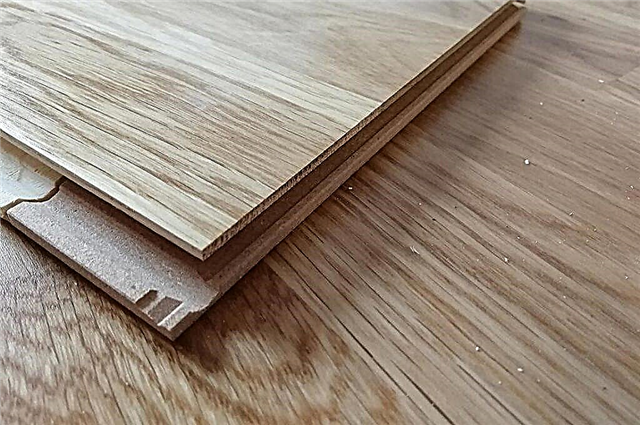
Since moisture absorption varies between these rocks, the board often bends. On the hardwood side, it remains stable, and on the reverse side it bends.
During installation, the coating is smoothed, but the tension in the wood remains. When walking, the board is pressed through, the contacting parts are rubbed and a creak or crunch is heard.
I believe that the key connection can also be rubbed, and glued plots can creak inside the structure.
I will tell you a few cases from a personal example, when it was possible to partially remove the crunch and creak of the floorboard.
Case 1
About 4 years ago I was invited to try to remove the crunch of a laid parquet board. We decided to use paraffin candles for this.
Having disassembled the parquet, I don’t remember which brand, I began to rub candles into the groove part of the castle, simultaneously collecting the rows back. As a result of several days of work, the floor was relocated. The crunch left 90 percent.
Which contributed to a strong crunch of the board. The south side, the room was with a balcony, on the balcony when I went in it was 50 degrees. Can you imagine what hell? The material has dried out.
By the way, a few months later he called the man, asking how the floor? He spoke when he creaked hotly, and so everything is fine.
Case 2
Parquet Tarkett for some reason often crunches. The first notes are usually heard immediately, in the subsequent sound only amplifies. As was the case with this order. I was invited again, they also worked with candles. The defect is mostly eliminated.
Case 3
I already laid the Shoher board, there were no comments on the creak. A call came in, a man asked why the board might crackle. He thought because of the backing. I outlined the situation and how to fix it. But, first of all, I recommended contacting the seller. Such things are on the board for 5000 rubles / m2 ... They simply should not be. As a result of the lawsuit, he asked the person to tell how the case ended. Moreover, he was going to use my services.
When assembling several rows of parquet board yourself, listen to for a slight crunch. If it is, you can use Rico wax sealant, or rub candles. But it is better to call the master from the store with a guarantee, asking about it directly in the forehead. Nevertheless, I don’t feel like joking about the new floor by all means.

Rico Sealant - New Packaging

Rico wax sealant for joints - in the old form of release
Most likely, when asking a question about a creak in a parquet board, you are faced with this particular situation. Nevertheless, on an uneven basis, both customers and craftsmen are usually up to date and will not look for the answer to the question of how to eliminate the creak.
7. Defective or low-quality laminate
Technical characteristics of the laminate greatly affect its service life. These are plate density, load classes and abrasion. But Chinese manufacturers stamp products without looking at quality. As a result, fragile locks wear out quickly.
Such a laminate begins to creak in the first year. Have you bought the cheapest cover from an obscure manufacturer? Then neither a smooth screed, nor a good substrate, nor the observance of gaps will save you from the crunch.
Decision: Only a complete replacement of the boards. Read how to choose the right laminate for an apartment.
Do not forget about the service life of the laminate floor. If the slats are not the first ten years - creaking is normal. The castle joints have long worn out and the boards rub against each other. It's time to think about replacing the floor.
However, the reasons for the creaky floor are not always in the laminate. If there is an old wooden floor beneath it - perhaps it is he who makes the crackle. In this case, you will have to remove the lamellas and strengthen the boards under them with screws.
The main causes of the problem
Laminate - the material, unfortunately, is quite moody. The coating of this variety can lie on the floor without causing any problems for its owners for decades. And it can manifest itself in a few days after installation. If when walking on the floor the boards began to make annoying sounds, first of all, of course, you should find out why the laminate creaks. What to do indiscriminately or with a parsing of the coating in this case? The answer to this question just depends on what exactly caused such an unpleasant phenomenon.
The laminate in the room can creak due to:
- violations of the required technology in preparing the foundation,
- too thick or thin substrate
- lack of a temperature gap between a covering and walls,
- poor quality of the material itself,
- aging subfloor.
Violation of foundation preparation technology
It often happens that in a room only in a single place the laminate creaks. What to do indiscriminately or with a parsing of the coating in this case - we will talk about this a little later. First, find out what could be the reasons for just such a creak. The appearance of annoying sounds in only one place most often means that the installation of the base was not followed during the installation of the coating.

Before laying the laminate, the rough floor is necessarily leveled. In this case, either a cement mortar or a special mixture is used. Defects in the base under the laminate should not be left. If you step on the lamella, located above the hole in the subfloor, it will bend a little. As a result, the elements of the locking connection will move relative to each other. And, as a result, a creak will be heard. Measures in this case should be taken immediately. Otherwise, after some time, the castle connection will become unusable and a noticeable gap will appear in the coating.
As usual, level the base
It would seem that in order to get rid of the squeak that arose due to violations of the preparatory work technology, you just need to remove a few lamellas, eliminate existing defects and put the material in place. But in practice, unfortunately, everything is far from simple. The fact is that the dismantling of part of the boards not from the edge of the coating, but directly on its area is impossible. This is primarily explained by the design features of the lamellas themselves. Therefore, with the appearance of annoying sounds, even in only one place, the coating usually has to be dismantled almost completely (from the wall to the problem board itself).
Laminate creaks: what to do and how to solve the problem indiscriminately
Dismantling such a floor is an operation technologically quite complicated and costly. The fact is that the laminate (and especially the Lock system) has very weak locks. Therefore, disassembly without loss of material is almost never possible.

That is why the owners of apartments and houses often have almost panic if the laminate creaks. “What to do indiscriminately?” - almost all real estate owners are starting to ask this question. In any case, in specialized forums you can hear it quite often. And the answer to it, of course, exists.
So, how do you avoid unnecessary expenses if the laminate creaks? What to do indiscriminately (irregularities will have to be eliminated not somewhere, but under the boards) of the coating? It turns out that getting rid of squeaking in one place of the laminate floor is possible only with the help of PVA glue and a large medical syringe.
A hole is drilled in the problem board using a drill first. Then glue is pumped into it with a syringe. As soon as the substrate is saturated and the PVA begins to protrude from the hole outward, the operation is terminated.
Than to drill a covering
So, in the problem board, you need to drill a hole and fill it with glue if the laminate creaks. What to do indiscriminately covering and how to fix the problem of uneven ground in this way, we have found out. Now let's take a closer look at how to perform this procedure according to all the rules. And let's start by finding out what technology exists for drilling holes in the laminate.

Unfortunately, it often happens that during this seemingly very simple operation, a large and ugly chip appears on the board, which is difficult to mask in the future. Or the board simply cracks. In order to avoid such troubles, before you start drilling, you should take care to choose the right tool. That is, the drill must be properly equipped.For laminate, as well as for wood, twist drills made of hardened steel are best suited. And you should choose not their standard version with a sharpening angle of 118 °, but more acute. Otherwise, during operation, the drill will necessarily begin to deviate to the side, and in this case, the risk of chips or cracks increases significantly.
How to close the hole
In the next hole made with a sharp drill, the PVA glue is squeezed out of the syringe in the event that the laminate creaks. What to do and how to fix this problem indiscriminately is thus clear. However, after carrying out such a not-too-complicated procedure, the owners of the apartment have another completely logical question: “How to mask a hole drilled in the floor?” You can do this using:
- putty or sealant,
- special wax pencil
- epoxy resin
- self-adhesive film
- with mastic.
At the final stage, the excess of masking material must be carefully removed from the laminate with a clean rag and very carefully processed the area to be repaired with fine sandpaper. Then part of the board with a closed hole should be polished with a cloth and covered with a single layer of colorless matte varnish.
Creak due to temperature gap
So, we found out, if only in one place the laminate creaks, what to do indiscriminately. The reasons for the appearance of annoying sounds, however, may lie not only in the unevenness of the base. Sometimes creaking occurs not in one place of coverage, but immediately over its entire area. Such a problem appears among the owners of apartments and houses, most often due to the fact that when laying the laminate, a too narrow gap was left between the extreme boards and walls.

The coating of this variety, like wood, with fluctuations in the room humidity or air temperature can expand or contract. Therefore, along the perimeter of the walls when laying the laminate, a small gap is arranged. Its width directly depends on the area of the room. If the gap is too small, when the coating expands, tension arises in its thickness. As a result, the elements of the locks begin to press against each other, which becomes the cause of the creak.
To fix the problem in this case is also quite simple. To do this, remove all the skirting boards. You can increase the temperature gap itself to the required width using a grinder. Of course, you need to do this job correctly.
How to cut a coating
Next, let's take a closer look at what to do if a laminate creaks due to an insufficiently wide temperature gap. What to do indiscriminately (the problem is solved by sawing off the "extra" part of the boards) - in this case it is clear. But how to reduce the coating area by a few centimeters and not spoil the boards?
Laminate is a material consisting of several layers. Therefore, a disc with the smallest cutting structure should be worn on the grinder. In this case, the saw line will be very smooth.
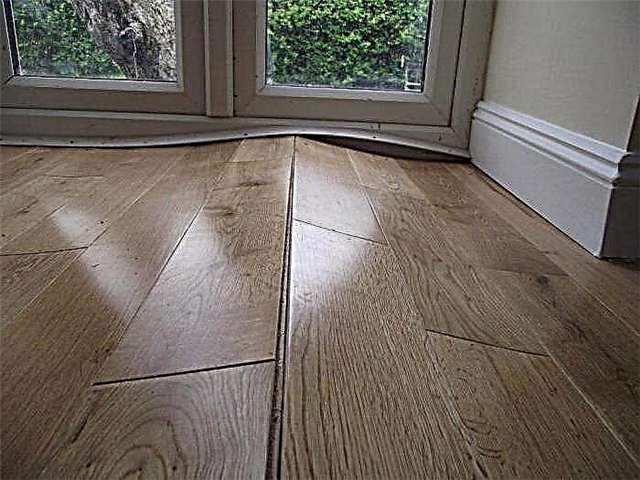
Instead of a grinder, you can also use a jigsaw. For this tool, of course, you also need to choose a suitable file. Otherwise, the cut will be sloppy. In this case, you can use either a narrow metal file with small teeth, or a special one designed specifically for working with a laminate.
Eliminate other causes of squeaking
Thus, now you know, if the laminate creaks, what to do indiscriminately (the unevenness of the base can be eliminated with PVA glue, and the temperature gap can be expanded with the help of a grinder). But, of course, annoying sounds can appear not only due to violations of the technology for preparing the rough floor or laying the boards themselves. The causes of this phenomenon often become: poor quality laminate flooring, improperly selected substrate or aging of the subfloor.
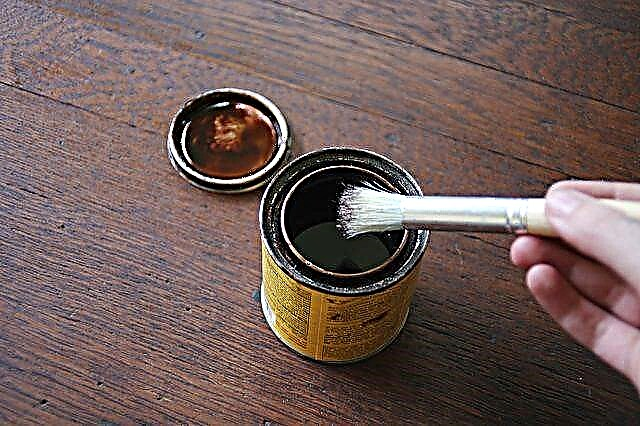
In all these cases, it will not be possible to do without dismantling the coating. A poor-quality laminate or an unsuitable substrate will have to be changed. If the creak is caused by aging of the finishing floor, an even more complicated operation will need to be performed. In this case, you will have to not only remove the laminate, but also dismantle the leveling screed. Squeaks in the rough floor appear mainly due to the departure of boards from the lag. Therefore, in order to get rid of annoying sounds, they will need to be knocked out with nails or tightened with screws.
Uneven base
Often, the creaking occurs due to the uneven surface of the base on which the laminate was laid. Perhaps before laying it was not well prepared. Small pits, tubercles, deformations can become the main factors in the appearance of an unpleasant sound coming from the floor when walking.
A few tips to prevent this unpleasant problem:
- Before laying the floor, be sure to carefully prepare the base for it,
- it is worth remembering that the laminate is quite demanding on the base, the slightest fossa, tubercle, will cause deformation, the appearance of unpleasant creaks,
- if the creak appears, then in this case you need to align the base. To do this, you will have to remove several panels at the scene of the creak,
- using a solution of cement, it is good to close up all the defects of the floor surface,
- everything must be left to dry
- the substrate is laid, the panels are inserted into place.
 Leveling the base with a loop
Leveling the base with a loopSubstrate thickness
Sometimes thick substrates are acquired in order to smooth out all pits and irregularities. However, this is not a solution, on the contrary, everything will become worse. A few tips to prevent defects due to the substrate:
- the thickness of the substrate is 2-3 cm,
- if the substrate has a thick structure, then after laying it will be observed increased sagging of the laminate. This will result in a creak,
- Before laying the laminate, make sure that the substrate is thin, otherwise the floor covering may need to be repaired or completely replaced.
 Laminate flooring
Laminate flooringTo prevent noise from the floor, it is necessary to remove the entire coating and lay a thinner substrate. If you do not want to disassemble the floor, then you will have to get used to the noise until the floor is completely replaced.
The small gap between the laminate and the wall
In order to prevent noise from the floor, when installing the floor covering between the laminated floor surface and the walls, a gap must be left. The gap width should be 7 mm. In spacious rooms, the gap can be 2-3 cm, it all depends on the width parameters of the laid skirting boards.
The presence of a gap makes it possible for the laminate to diverge, so that in the future it takes a comfortable position. The gap relieves stress from the joints of the locks, and the surface of the flooring protects against squeaks.
If there is no gap or its size is small, then during expansion, there will be an emphasis of the laminate on the walls and baseboards, which will lead to noise, creakiness of the floor surface.
In order to eliminate this problem, it will be necessary to remove the skirting boards, reduce the width size of the extreme laminate panels to form the optimal space between the laminate floor and the walls. After this, it is necessary to install the skirting board back, fix everything.  The gap between the baseboard and the laminate, the wall and the boards of the laminate
The gap between the baseboard and the laminate, the wall and the boards of the laminate
Variable humidity indoors
Laminate material can respond to moisture changes. With a sharp increase in the humidity level in the room, the laminate flooring begins to crackle, creak. In this case, the noise does not appear in one place, but throughout the floor. When humidity changes, squeaks disappear.
The creaking floor can be brought back to normal with the help of tips:
- creakiness usually disappears when the season changes,
- if creakiness appeared in the summer, then you should wait for heating. It’s possible that creaks and noise will disappear during this period,
- if squeaks appear during humidity changes, then with time they will disappear. For this, it just takes time for the laminate flooring to become comfortable in the new microclimate and stop making unpleasant sounds.
 Due to the increased humidity, problems with the laminate flooring may occur.
Due to the increased humidity, problems with the laminate flooring may occur.Dust and sand
When installing the flooring, make sure that the entire surface is clean. It is advisable to constantly remove dust, all dirt, sand from laminated boards, substrates and bases. Therefore, when laying the laminate, you must have a vacuum cleaner with you. In this case, the basis for the floor should be sawn in another room.
What consequences can cause dust, sand on the laminate:
- if sand and dust got on the castle joints of the panels, as a result this can cause a loud crunch,
- the noise from the crunch can cause not only irritation, but also lead to damage to the castle joints,
- the appearance of a creak, a crunch can be observed even in the screed, but on condition that it is of poor quality.
 Before laying the laminate, you need to clean the floor surface as much as possible
Before laying the laminate, you need to clean the floor surface as much as possibleIf the laminate creaks while walking, and the reason lies in the accumulation of dust and sand, then it is quite difficult to eliminate this problem, especially if dust accumulates in the area of the joints. If the whole thing is in poor-quality screed, then for this you will have to disassemble the area with a creak. The screed should be refilled with cement mortar, leveled, dried, primed and cleaned. After that, the floor covering is installed again. During laying, the screed must be well primed, this will protect it from further shedding.
Using substandard material
Another reason why the floor is creaking from the laminate may be the poor quality of the floor material. When laying a low-quality laminate, even the main qualities of the flooring can not prevent squeaking:
- high-quality base that is perfectly aligned
- lack of dust, dirt, sand when laying the floor,
- the correct gap size
- desired thickness of the substrate.
 Using low-quality laminate
Using low-quality laminateThe main weak point of a poor-quality laminate is the locks, they have different sizes. An unpleasant creak may appear when walking on the floor. These creaks are eliminated only by a complete change of flooring.
Advice for the future should be acquired only from trusted manufacturers. It should have high quality, good strength, wear resistance. Of course, the cost of this coating will be much higher, but after laying it will not creak, crunch, as well as swell, deform.
The voltage in the locking elements
Another reason for the creaking of the laminate floor may be the pressure at the joints of the locks. This problem is quite common. Moreover, it may appear in the material with high quality. In a coating with high quality, noise is observed for several weeks and lasts up to a month.  Laminate castle - the main occurrence of squeaking
Laminate castle - the main occurrence of squeaking
Laminate with high quality can maintain a state of tension in the locks for a certain period of time, after laying it floats for some time until it takes the necessary position. During this process, the coating adjusts to the shape of the room, to the surface of the base, as well as to the specificity of patency.
Therefore, when laying the laminate, the necessary gaps should be left near the walls. If they are, then the laminate flooring will occupy a comfortable position. As a result of this, all extraneous sounds disappear, creaking, the floor will become smooth. This process usually takes 2-3 months.  The lock is not fully latched
The lock is not fully latched
The presence of debris under the laminate
If the installation of the laminate flooring is done correctly, a gap is provided in the space between the wall and the floor, but unpleasant sounds still come from the flooring. There may be trash under the laminate. In this situation, it will be necessary to dismantle the flooring.
Advice, if the laminate is of good quality, you do not want to disassemble it, then you can leave everything as it is. All rubbish will fray, all grains of sand, various rubbish will disperse. Over time, the creaking of the floor will completely disappear. But there is a negative side - the bottom layer can seriously suffer from this, which will negatively affect the quality of the entire floor covering.
How to do garbage removal:
- you need to remove all the laminate boards,
- the substrate is removed
- it is necessary to clean the base of all debris, litter. It would be nice to use a vacuum cleaner, no debris should remain on the surface of the base,
- a new substrate is laid
- a laminate is installed at the end.
 Carefully remove the laminate lamellas
Carefully remove the laminate lamellas  Surface cleaning
Surface cleaning  Laminate panels in place
Laminate panels in placeWays to eliminate squeak of laminate indiscriminately
If a creak is heard in your house or apartment, then you need to figure out why the laminate creaks. Many immediately think about parsing or a complete change in flooring. But it is not always necessary to make analysis to eliminate hateful noise when walking on the floor. If a laminate suddenly creaks in the house, then what to do in these cases, and most importantly how to fix it indiscriminately?
In this case, several important recommendations will help, which will help eliminate the creak of the laminate, while not dismantling the floor covering. Everything is quite simple, consider a few tips:
- how to eliminate the local creak - to get rid of the local creak, you need a paraffin candle, it will need to be warmed up. Hot wax is poured into the creaking area, also with the help of it mashing of all cracks is done. Grouting is done with a thin spatula made of plastic material. It will be a good result if the whole process is carried out with an old plastic card, which has long been out of circulation,
- how else can you get rid of the creak of the laminate what to do indiscriminately? If floor creaking appears near the walls, then you need to remove the panels. All joints can be foamed with foam or filled with PVA glue,
- if floor creaking is observed in the center of the room, then in this case it is worthwhile to drill holes with a diameter of 0.6 mm. PVA glue is poured into this hole using a syringe. After that, we leave everything to stand until the glue hardens completely. Within 2 days, it is not recommended to step on the surface with glue,
- if walking, creaking of thresholds occurs, then they should be glued with a transparent adhesive solution,
- to eliminate squeaking, you can pour a small amount of oil into the drilled holes in the laminate boards,
- filling cavities, pits, deformations on the surface of the base with foam.
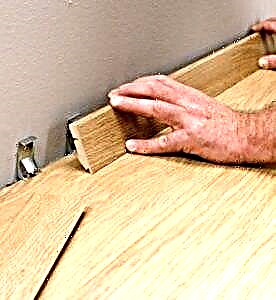 Laminate skirting board - minimum clearance required
Laminate skirting board - minimum clearance required  Joints are sealed with glue
Joints are sealed with gluePrevention
To prevent the creak of the laminate floor in the future, it is worth using important recommendations:
- do not save on laminate - it is recommended to purchase an expensive floor covering with sufficient thickness,
- it is advisable to use a plate with a rigid structure; its thickness should be 3 mm. Do not use thick substrates, they can cause intense creaking of the flooring,
- Before starting laying, it is better to carefully prepare the base in advance. It must be cleaned of excess debris, dust, sand. It needs to be well leveled,
- before laying the laminate, it must be kept for some time indoors at room temperature,
- during installation, you need to carefully snap the locking joints, it is desirable to knock them out,
- be sure to leave a gap between the walls and the floor around the perimeter of the room,
- if possible, you should install climate control equipment that will regulate the temperature in the room.
Laminate creaking is an unpleasant floor defect that can cause serious problems. As a result of this malfunction, the entire coating can suffer, up to complete wear. If an unpleasant noise began to appear when walking on the floor, then it is better to eliminate it immediately, otherwise you will have to change the entire floor.


